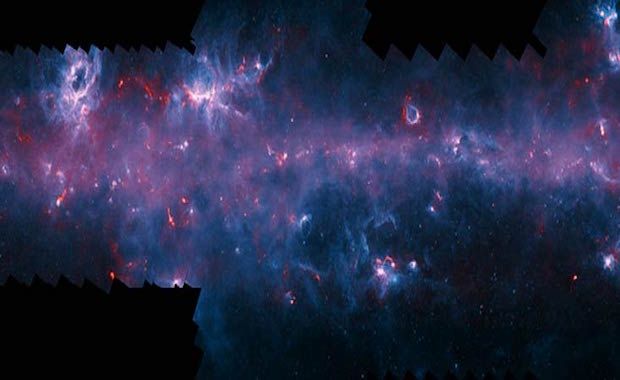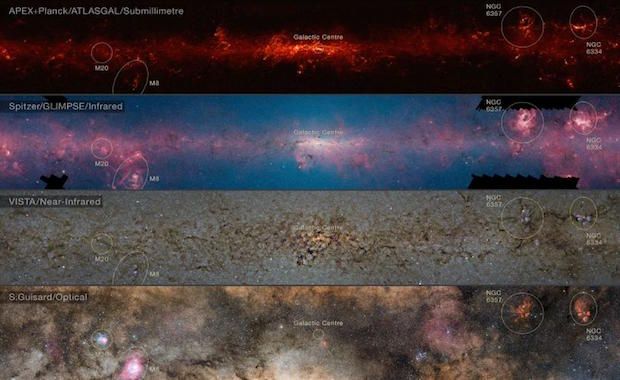Advertisement
New Milky Way Map Survey Reveals a Bigger View of Our Galaxy
| By Margo Gothelf
Advertisement - Continue reading below

Astronomers are getting a new view of the Milky Way thanks to a new map drawn by the APEX telescope.
The APEX Telescope Large Area Survey of the Galaxy (ATLASGAL) has completed its first full survey of the Milky Way in seven years. The new survey was able to give a full and complete view of the galaxy, expanding the map to four times its area since the last scan.
The map is part of the astounding technology that pinpoints “the cold areas distributed throughout the Milky Way,” shared Gizmodo. On top of the extended map, researchers have been able to track down “star-making factories” in order to get a better idea of where and how they work.
The work is fully explained in a 70-page document, predominantly in the journal Astronomy and Astrophysics. The map shows the galaxy covers an area of 140 degrees long and 3 degrees wide.
The APEX telescope is located in the Atacama region of Chile, positioned 5,100 meters (about 3 miles) above sea level. The APEX is able to read the skylight in submillimeter wavelengths, using infrared light and radio waves.

“ATLASGAL has allowed us to have a new and transformational look at the dense interstellar medium of our own galaxy, the Milky Way. The new release of the full survey opens up the possibility to mine this marvelous dataset for new discoveries,” Leonardo Testi, from ESO and member of the ATLASGAL team, explained in a statement with EOS.
Together with the new findings, astronomers were able to combine the data found by the Planck space telescope enabling them to a create a larger covering for the area of the Milky Way.
“By combining these with observations from Planck, we can now obtain a link to the large-scale structures of giant molecular clouds,” Timea Csengeri, of the Max Planck Institute for Radio Astronomy, shared with EOS.
Advertisement - Continue reading below
Share
On Facebook
